Nature isn’t just about brute strength—sometimes, the sharpest mind wins. The animal kingdom is full of predators that use their cunning and intelligence to outwit prey and dominate the food chain. These creatures don’t just rely on speed or claws; they strategize, adapt, and sometimes even manipulate their surroundings to gain the upper hand. From sneaky hunters to tactical takedowns, these scary-smart predators are so feared that even their fellow animals know to steer clear.
1. The Cunning Orca
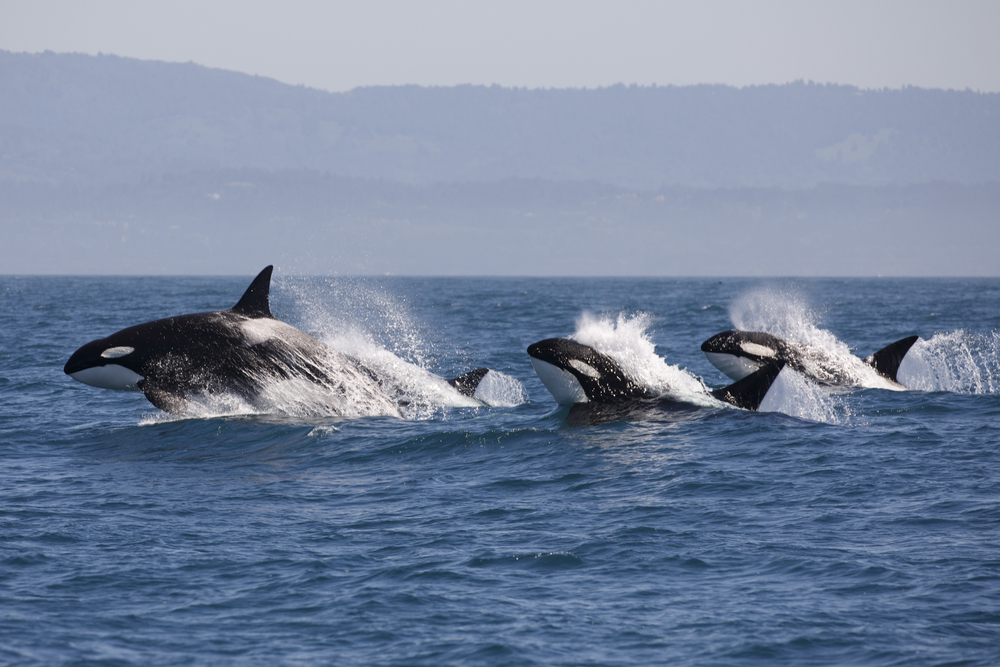
Orcas, also known as killer whales, are among the ocean’s most feared predators. These incredible creatures are known for their intelligence and the complex strategies they use to hunt, according to National Geographic. They communicate and coordinate with each other to corral fish into tight balls or wash seals off ice floes. Some pods even specialize in hunting specific prey, like sharks, by flipping them over to induce a state of tonic immobility. It’s pretty clear that orcas don’t just rely on their size or strength; their calculating minds make them formidable hunters.
But it’s not just their hunting techniques that showcase their intelligence. Orcas have also been observed displaying cultural behaviors, passing on hunting techniques and social knowledge through generations. This kind of cultural transmission is rare in the animal kingdom and speaks volumes about their cognitive abilities. According to experts, their brain structure is complex, with features that support problem-solving and communication. So, it’s no wonder other marine animals give these brilliant hunters a wide berth when they come around.
2. The Strategic Great White Shark
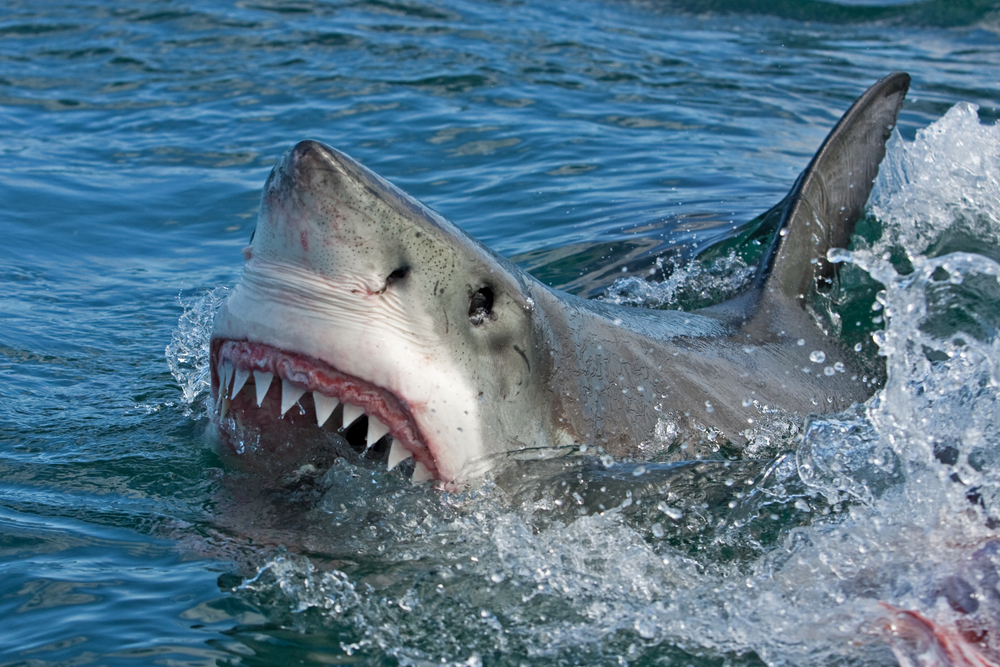
Great white sharks have long been the stuff of nightmares for anyone who’s seen Jaws. But beyond their fearsome reputation, they are also smart, strategic hunters. These apex predators use their acute senses and intelligence to ambush prey. They often utilize the element of surprise, striking from below with incredible speed and precision. Their ability to detect electromagnetic fields helps them find prey even when it’s hidden.
Great whites also have a knack for learning and adapting their strategies based on the situation. For instance, they might adjust their hunting approach depending on whether they’re targeting seals or other fish. This adaptability makes them highly effective predators, keeping their prey constantly on edge. It’s fascinating to think of sharks as more than just instinct-driven creatures; they plan their attacks and learn from experience. So, next time you picture a great white, remember there’s more to them than just razor-sharp teeth.
3. The Clever Bottlenose Dolphin
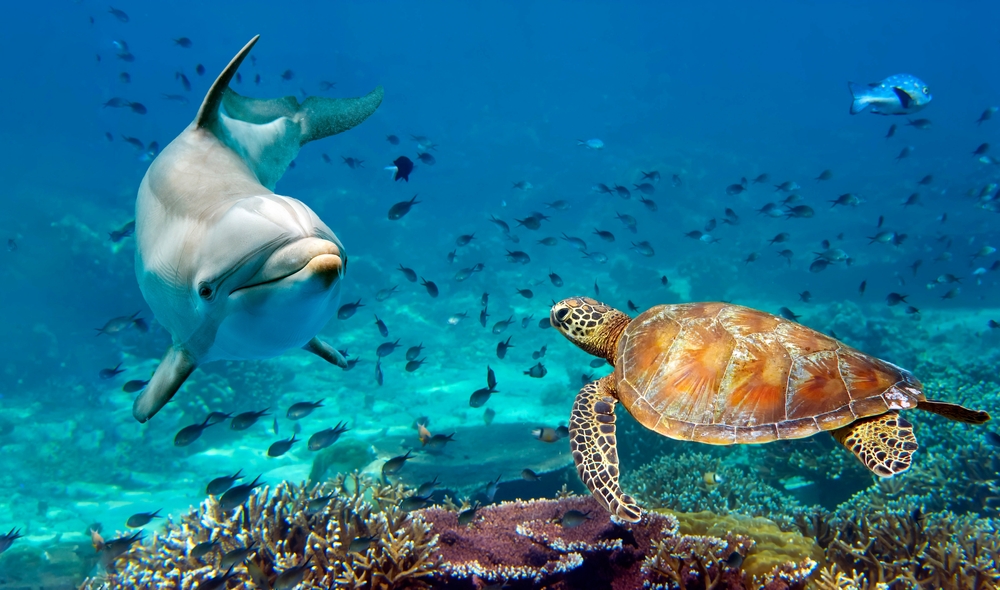
Bottlenose dolphins are well-known for their intelligence and playful nature. They also have a darker side when it comes to being predators, especially feared by fish. These clever animals work together to herd schools of fish into tight clusters, making it easy to pick them off. Dolphins will use their tails to kick up mud rings around fish, trapping them in a “net” of murky water.
Their problem-solving skills and ability to learn complex behaviors make them formidable hunters. Dolphins have been seen using tools, such as sponges, to protect their snouts while foraging on the seafloor. This level of ingenuity isn’t something you see every day in the animal kingdom. They also use vocalizations to communicate and coordinate hunting efforts, showcasing their incredible teamwork. If you’re a fish in the ocean, a pod of dolphins is definitely something to steer clear of!
4. The Sly Red Fox
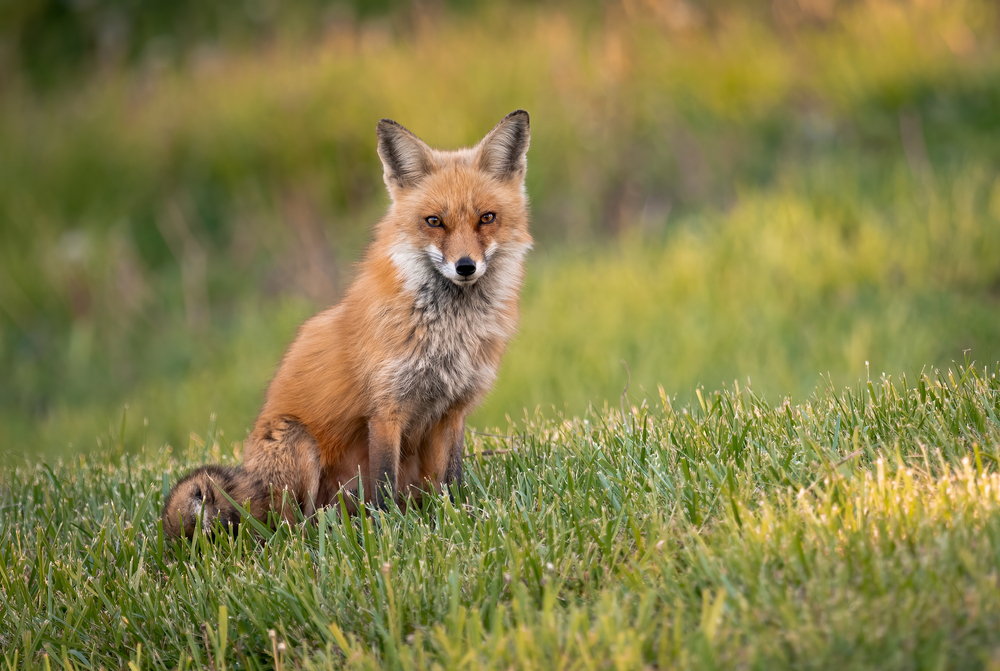
The red fox may look cute and cuddly, but don’t let that fool you. These wily creatures are incredibly adept at hunting and are feared by many smaller animals. Red foxes are experts at using their keen senses to locate and catch prey. They have an extraordinary sense of hearing that allows them to detect small animals moving underground. Their iconic pouncing technique is as effective as it is fascinating to watch.
But what really sets the red fox apart is its adaptability and problem-solving prowess. Foxes are known to change their hunting tactics based on the environment and the type of prey they’re pursuing. They’re also highly opportunistic, taking advantage of whatever food sources are available, which keeps them one step ahead of their prey. Their intelligence and adaptability make them a successful predator in a variety of habitats. So, next time you spot a red fox, remember there’s more going on behind those crafty eyes.
5. The Crafty Octopus
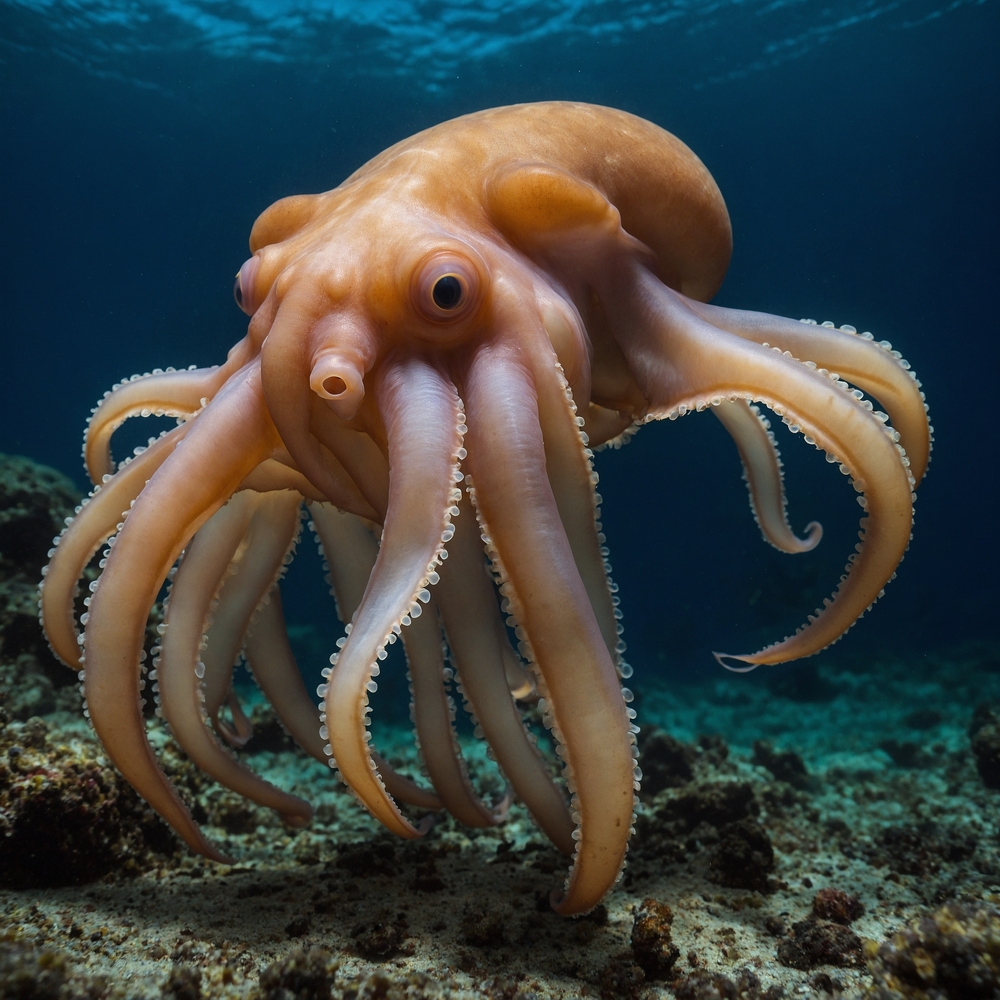
Octopuses are arguably some of the most intelligent invertebrates on the planet. These eight-armed wonders are feared predators in the underwater world, known for their problem-solving skills and ability to adapt. According to Scientific American, octopuses are masters of disguise, using their remarkable ability to change color and texture to ambush prey. They can squeeze into tight spaces to catch unsuspecting crustaceans and fish.
What makes them so formidable is their capacity for learning and memory. Octopuses can navigate mazes, solve puzzles, and even use tools to obtain food. Their nervous systems are highly complex, with a significant portion of their neurons residing in their arms, allowing them to perform intricate movements. This makes them not only efficient hunters but also fascinating creatures to study. In the ocean’s depths, few animals can rival the octopus’s blend of intelligence and predation skills.
6. The Tactical African Lion
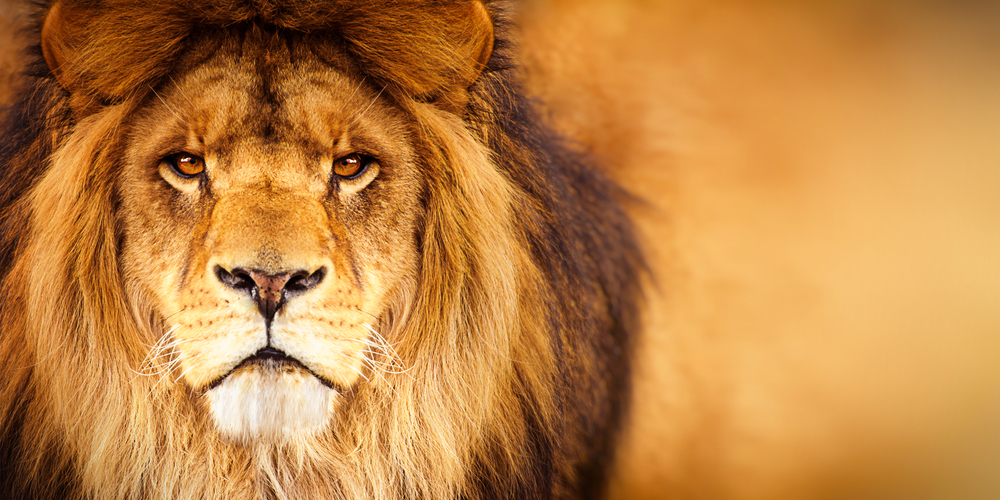
African lions are often dubbed the kings of the jungle, and it’s not just because of their majestic manes. These big cats are intimidating predators, deeply feared by their prey due to their strategic hunting methods. According to National Geographic, lions are social animals that rely on teamwork to bring down large prey. They often hunt in prides, using coordinated strategies to encircle and ambush their targets.
Lions have been seen using the cover of darkness to their advantage, capitalizing on their excellent night vision. Their ability to communicate and coordinate during hunts is a testament to their intelligence. Each lion has a specific role within the pride’s hunting strategy, whether it’s chasing, ambushing, or delivering the killing bite. This level of organization is crucial for taking down large prey like buffalo. It’s this combination of strategy and strength that makes them such effective predators.
7. The Strategic Bald Eagle
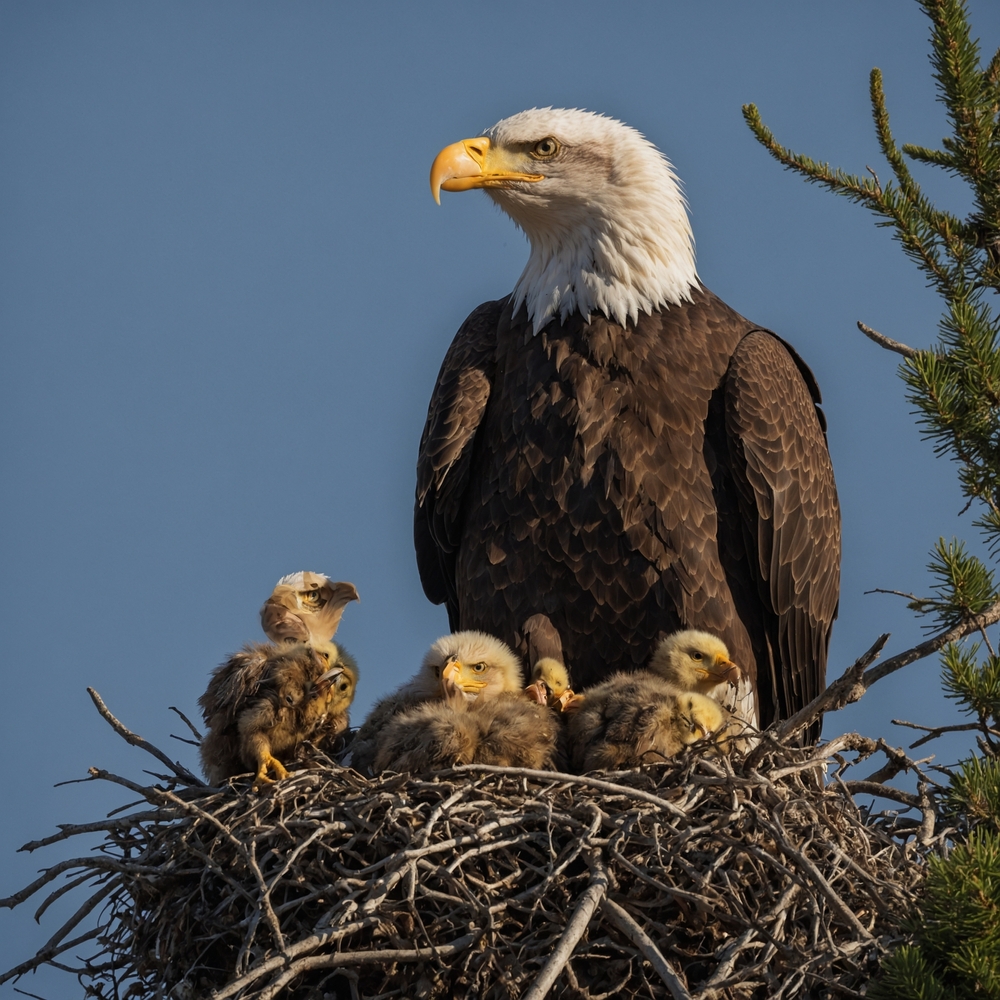
The bald eagle, a symbol of strength and freedom, is not just a pretty face. These majestic birds are highly skilled predators, feared by fish and small mammals alike. Bald eagles have incredibly sharp vision, allowing them to spot prey from long distances. They are known for their impressive hunting dives, where they swoop down at high speeds to snatch fish right out of the water.
Their intelligence and adaptability make them successful hunters in various environments. Bald eagles are opportunistic feeders, often taking advantage of carrion when live prey is scarce. They are also known to steal food from other birds, showcasing their resourcefulness and competitive nature. This adaptability ensures they thrive in diverse habitats, from coastal regions to inland waterways. The bald eagle isn’t just a national symbol; it’s a testament to the power of keen observation and strategic hunting.
8. The Intelligent Cheetah
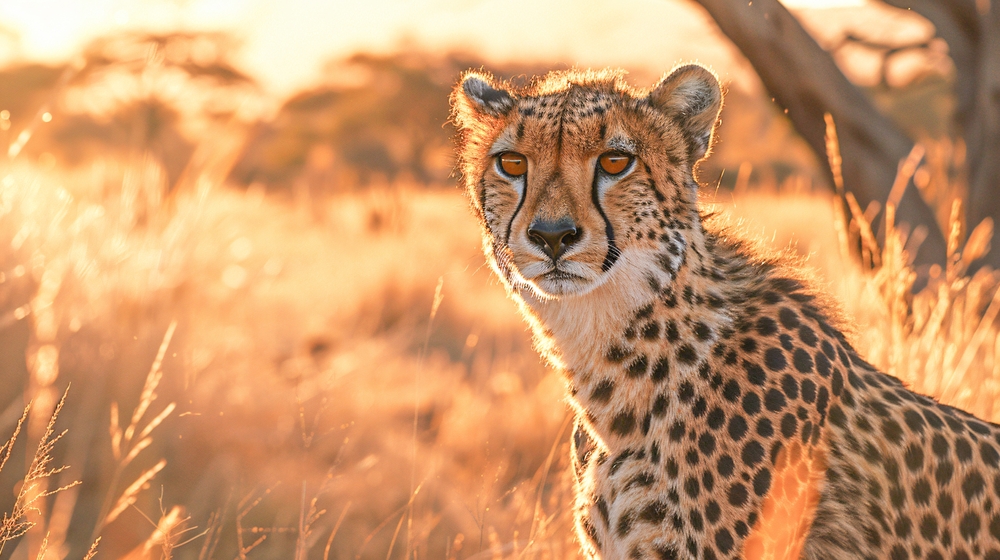
Cheetahs are famous for their speed, but their intelligence plays just as big a role in their hunting success. These speedy cats are feared for their ability to execute high-speed chases with astonishing precision. Cheetahs use their keen eyesight to spot prey from afar before engaging in a sprint. Their hunts are calculated, with cheetahs carefully selecting the right moment to strike.
But it’s not just about speed; cheetahs also employ strategic thinking during hunts. They often use the landscape to their advantage, using hills or bushes as cover before launching an attack. Cheetahs are also known for their ability to adapt their tactics based on the behavior of their prey. This flexibility, combined with their physical prowess, makes them a force to be reckoned with on the savannah. Though they’re often overshadowed by larger predators, cheetahs are a perfect blend of brains and brawn.
9. The Calculating Gray Wolf
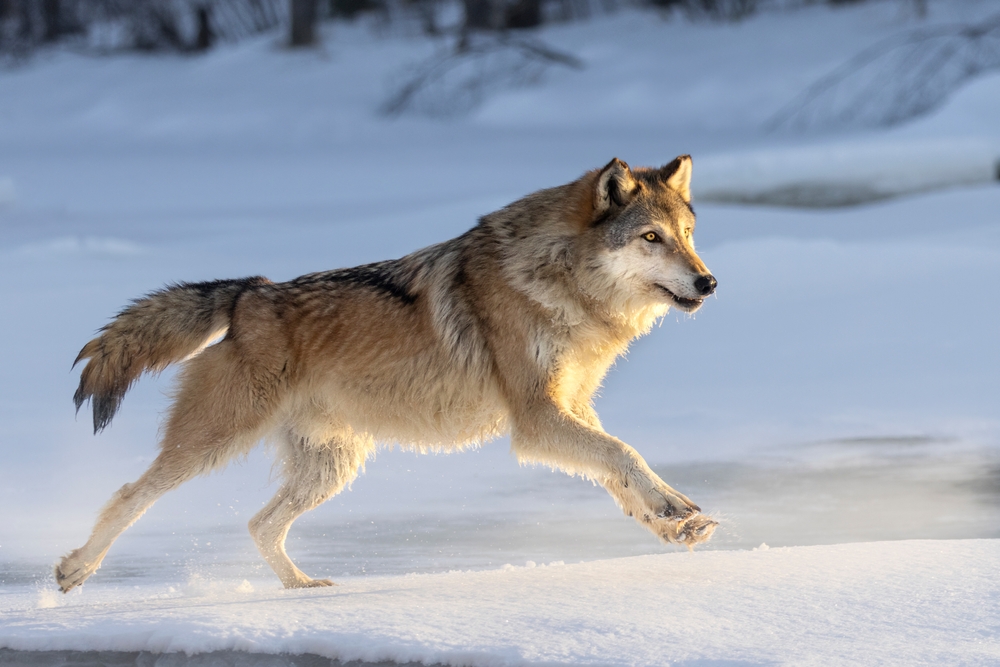
Gray wolves are top-tier predators, known for their intelligence and social structure. These pack animals are deeply feared by their prey, thanks to their strategic hunting techniques. Wolves rely on teamwork, communicating through body language and vocalizations to coordinate their efforts. They often test herds to identify weak or vulnerable individuals before launching an attack.
Wolves are also known for their stamina, able to cover vast distances when pursuing prey. They employ chase and ambush tactics, using the pack’s collective strength to take down larger animals like elk or moose. Their ability to adapt to different environments and prey types is a testament to their intelligence. Wolves are also capable of solving complex problems, such as finding ways to access food in challenging situations. This combination of brainpower and brawn makes them one of the most respected predators in the wild.
10. The Fearsome Saltwater Crocodile
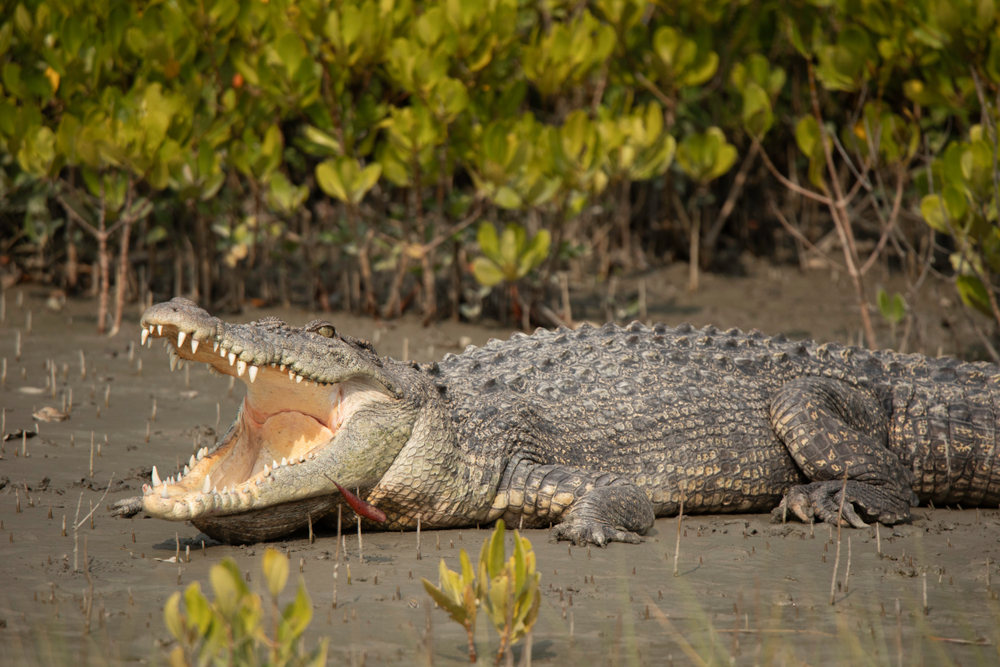
Saltwater crocodiles, or “salties,” are apex predators with a fearsome reputation. These massive reptiles are deeply feared in their habitats for their stealth and power. Salties can remain motionless for hours, using their camouflage to ambush unsuspecting prey. With their powerful jaws and immense size, they can take down large mammals with ease.
But it’s not just their physical abilities that make them formidable; saltwater crocodiles are also surprisingly intelligent. They have been observed exhibiting problem-solving skills, such as using sticks as bait to lure birds during nesting season. This level of cunning is impressive for reptiles and highlights their adaptability. They are also known for their ability to learn and remember feeding times in areas with human interaction. This combination of stealth, strength, and intelligence makes them truly terrifying predators.
11. The Deceptive Spotted Hyena
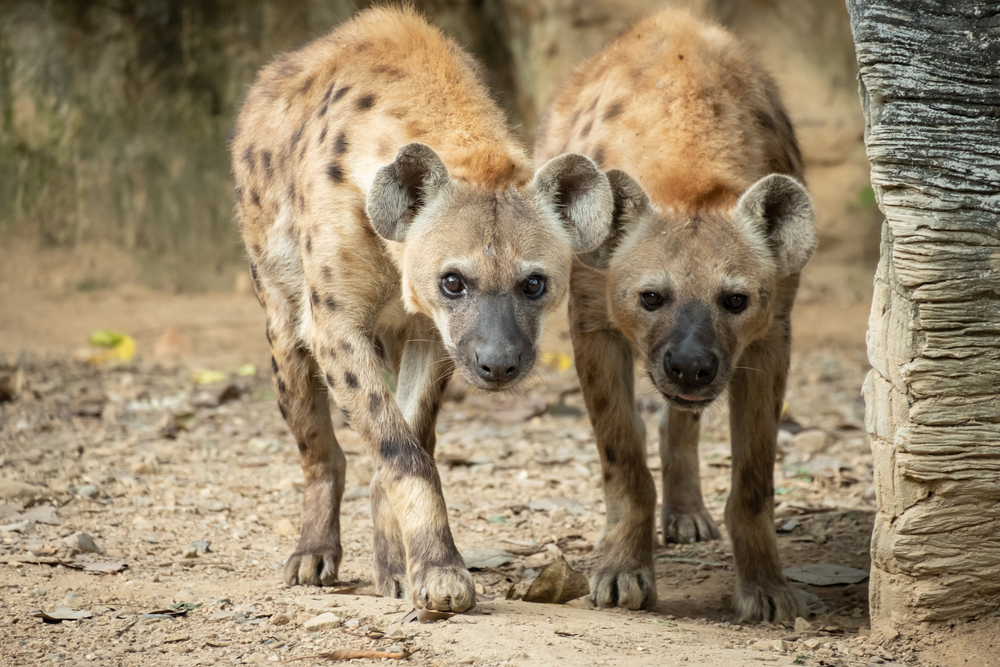
Spotted hyenas are often misunderstood, but they are truly formidable predators. These social animals are feared in the savannah for their intelligence and complex social structures. Hyenas are skilled hunters, capable of bringing down large prey with their powerful jaws. They often hunt in groups, using strategic cooperation to outmaneuver their targets.
Hyenas are also known for their problem-solving skills, often figuring out how to access food that’s difficult to reach. Their intelligence is not just limited to hunting; they have intricate social systems with a hierarchy based on both age and rank. This social intelligence helps them work effectively as a team, ensuring they maximize their hunting success. Despite their reputation as scavengers, hyenas are successful hunters in their own right. Their combination of strategy, teamwork, and cunning makes them a force to be reckoned with.
12. The Strategic Harris’s Hawk
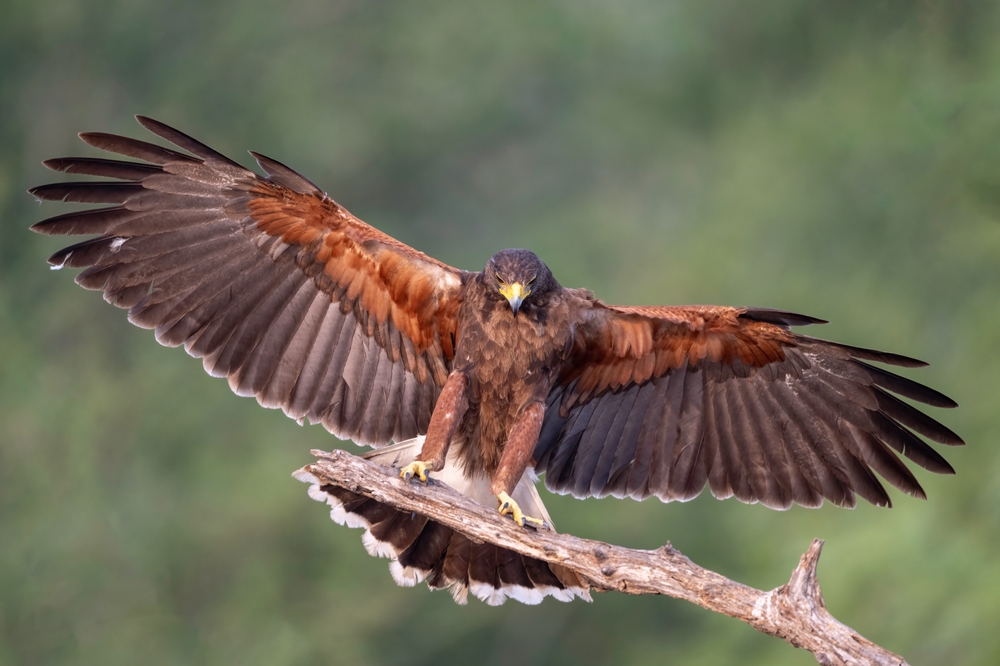
Harris’s hawks are known for their cooperative hunting techniques unlike most birds of prey. Small mammals and birds fear these impressive raptors due to their team-based hunting strategies. Harris’s hawks hunt in groups, working together to flush out and capture prey. This pack-hunting behavior is rare among raptors and highlights their intelligence and adaptability.
Harris’s hawks communicate and coordinate during hunts, taking turns leading the chase and blocking escape routes. This level of cooperation is akin to that seen in wolves and lions, showcasing their strategic prowess. They are also known for their ability to adapt their hunting techniques based on the terrain and prey availability. This flexibility ensures they remain effective predators in various environments. If you’re a rabbit in their territory, you’d better watch out for these aerial hunters!
13. The Intelligent Common Chimpanzee
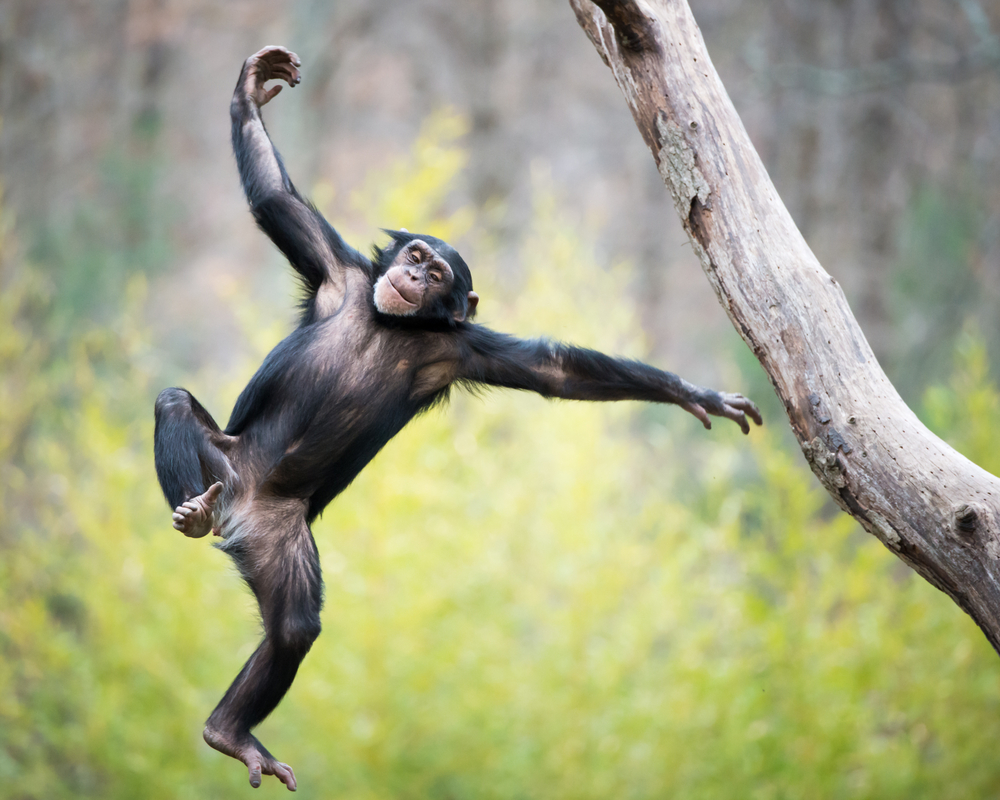
Chimpanzees are often celebrated for their intelligence, and this extends to their predatory habits. While they primarily eat fruits and plants, chimps are also known to hunt small mammals, birds, and insects. Chimpanzees use tools and strategic planning to catch prey, highlighting their cognitive abilities. They have been observed fashioning sticks into spears to extract insects or hunt small animals hiding in crevices.
Their social intelligence also plays a role in their hunting success. Chimpanzees often hunt in groups, using their understanding of social dynamics to coordinate attacks and share the spoils. Their ability to learn from each other and teach young chimps ensures the continuation of effective hunting strategies. This combination of tool use, social coordination, and learning makes them unique among primates. For smaller animals in their forest habitats, chimpanzees represent a surprising and intelligent threat.
14. The Crafty Black Mamba
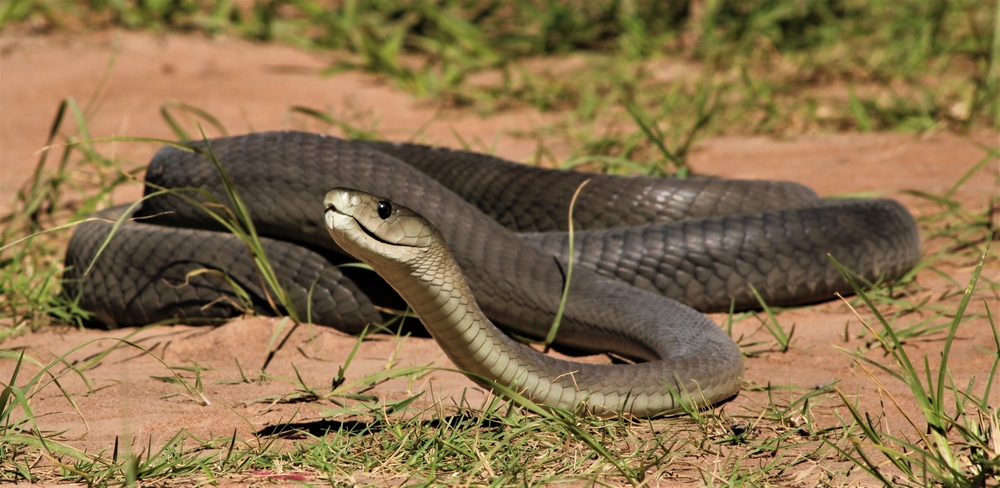
The black mamba, one of the world’s deadliest snakes, is feared for more than just its potent venom. These snakes are fast, agile, and surprisingly strategic when hunting. They often lie in wait, using their excellent camouflage to remain unnoticed before launching a rapid attack. Their speed and precision make them formidable predators, able to catch small mammals and birds with ease.
What sets the black mamba apart from other snakes is its ability to learn and adapt in its environment. They have been observed modifying their hunting techniques based on prey behavior, showcasing a level of intelligence not often associated with reptiles. This adaptability, combined with their physical abilities, makes them efficient hunters. Their reputation as one of the most feared snakes is well-earned, thanks to this combination of cunning and capability. For animals in their range, a black mamba encounter is something to avoid at all costs.
15. The Calculated Leopard Seal

Leopard seals are the apex predators of the Antarctic, deeply feared by penguins and other marine animals. These seals are solitary hunters, relying on stealth and surprise to catch their prey. They are known for their incredible agility in the water, capable of outmaneuvering even the fastest penguins. Their powerful jaws can deliver a lethal bite, making them truly formidable predators.
Leopard seals are also known for their cunning hunting strategies. They have been observed using ice as a platform to ambush unsuspecting prey, demonstrating a level of problem-solving ability. Their intelligence allows them to adapt their hunting techniques based on the environment and prey availability. This adaptability ensures their dominance in the harsh Antarctic ecosystem. For animals swimming in these icy waters, the presence of a leopard seal is a constant and terrifying threat.
